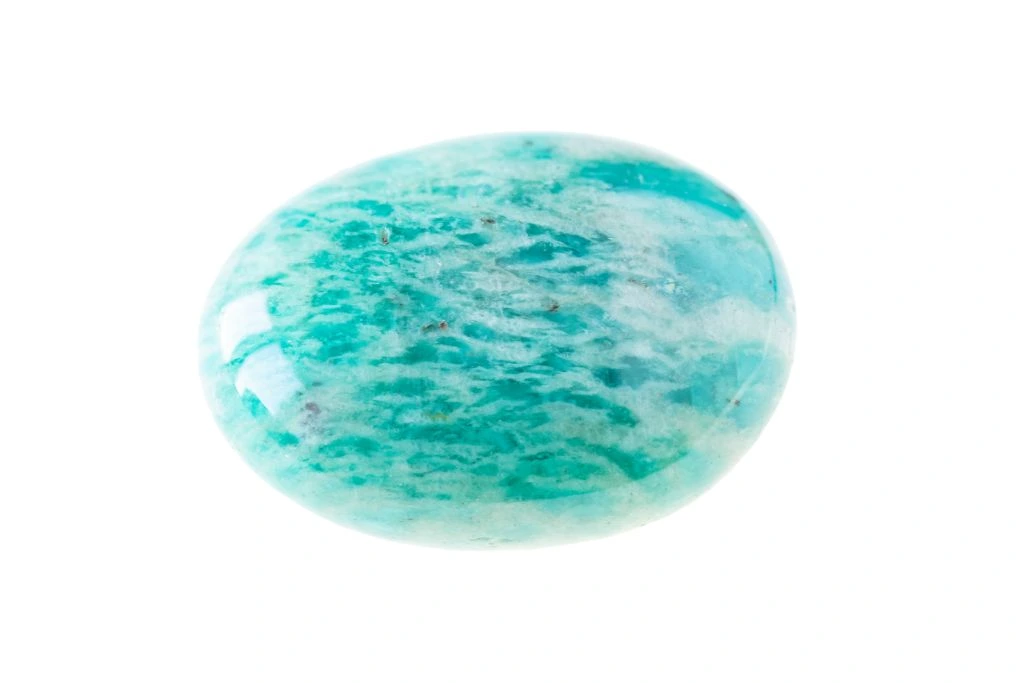Appearance of Amazonite
Amazonite is a striking and visually captivating gemstone, renowned for its distinctive appearance. This feldspar mineral is most recognized for its mesmerizing blue-green to green color, which can range from pale seafoam to deep forest hues. The color is often described as reminiscent of the lush Amazon rainforest, hence its name.
Color Variations
While predominantly green, amazonite can also exhibit shades of blue, white, and even yellow. Some specimens display a captivating interplay of colors, with streaks or patches of white or cream interspersed throughout the green matrix. This color variation adds depth and character to the stone, making each piece unique.
Structural Characteristics
Amazonite typically forms in short prismatic crystals or as massive granular aggregates. It has a triclinic crystal system, which contributes to its complex internal structure. The mineral often exhibits a subtle schiller effect, creating a shimmering appearance when light hits its surface at certain angles.
Notable Physical Features
One of the most distinctive features of amazonite is its perthitic texture. This refers to the intergrowth of two feldspar minerals, creating a mottled or streaked appearance. This texture is visible as white or off-white veins or patches within the green body of the stone. Additionally, amazonite has a vitreous to pearly luster, enhancing its visual appeal and giving it a glossy finish when polished.
Unique Aspects
What truly sets amazonite apart is its microcline structure, which gives rise to its signature color. The green hue is believed to be caused by small amounts of lead and water in its chemical structure. Furthermore, some amazonite specimens exhibit chatoyancy, a cat’s-eye effect that creates a silky, movable line of light across the surface, adding to its allure and rarity.
Historical and Cultural Significance of Amazonite
Amazonite, a striking blue-green variety of microcline feldspar, has captivated humans for millennia. Ancient Egyptians prized this gemstone, using it in jewelry and decorative items. The name “Amazonite” stems from the Amazon River, although interestingly, the stone is not found in this region. This misnomer adds to the mystique surrounding this captivating mineral.
Metaphysical Associations
In the realm of crystal healing and metaphysics, Amazonite is revered for its supposed ability to balance and align the chakras, particularly the heart and throat chakras. It is believed to promote clarity of thought, enhance communication skills, and foster a sense of inner peace. Many practitioners consider Amazonite a stone of truth, harmony, and self-discovery.
Common Uses and Benefits
Amazonite finds widespread use in both traditional and modern applications. Jewelry makers value it for its unique color and durability, crafting stunning necklaces, bracelets, and earrings. In holistic healing practices, Amazonite is often used in meditation, placed on the body during energy work, or carried as a pocket stone. Some believe it can alleviate stress, soothe emotional trauma, and boost self-esteem. In feng shui, Amazonite is thought to bring balance and positive energy to living spaces.
Modern Applications
Beyond its ornamental and metaphysical uses, Amazonite has found its way into modern wellness routines. It is incorporated into skincare products, claiming to promote a youthful appearance and reduce inflammation. In the tech-savvy world, Amazonite phone cases and laptop stands have gained popularity, purportedly to counteract the negative effects of electromagnetic radiation. While scientific evidence for these benefits is lacking, the enduring appeal of Amazonite speaks to its timeless allure and the human desire for connection with the natural world.

